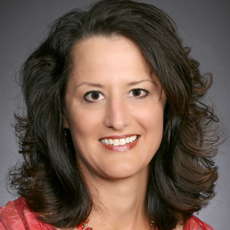
Between the 1960s and 1980s, my father-in-law was a doctor with a vision that far surpassed those of his era. He wanted not merely to treat patients, but to head off future illnesses that might afflict them due to unhealthy choices. If he determined patients were obese, he would attempt to assist them with finding a diet and exercise plan that worked for them. He did not shy away from talking to people about things that would change their lives for the better.
Today, this approach has particular appeal for healthcare professionals who want to achieve the Triple Aim created by the Institute for Healthcare Improvement: improving individuals’ experience of care, improving population health and reducing the per capita cost of healthcare. This post is about improving population health—one of a provider’s greatest challenges.
I write this because in all my years of working in rehabilitation, I have been in hundreds of independent and assisted living communities that cater to the older generation. I have seen beautiful fitness and pool areas that cost hundreds of thousands of dollars — and next to no use of these fitness centers. What good does this do for older people in our communities?
We must find a way to motivate people to commit themselves to a healthy lifestyle if we are ever going to see improvements in our population as a whole. My hope is that over the next decade, we can identify what is holding people back from optimum health and find creative ways to make corrections.
Educating people about how to make healthy choices is important, but only half the battle. People do not typically change their behaviors unless something happens that shakes them up—a heart attack, injury or illness. Healthcare needs to examine what motivates the majority of the population and use that motivation to change behaviors.
For some, decreasing the cost of health insurance may work; others may prefer a free health club membership. People are motivated by positive rewards — yet, changing destructive behaviors can be extremely challenging, especially if people are homeless or abusing drugs and alcohol.
It is our duty as healthcare providers to teach in a non-threatening manner in order to influence the patients that we treat. Once we have educated patients on how to maintain the strength they gained in our care and live healthier lifestyles, follow-up is crucial. This may include a referral to a fitness/wellness center, restorative care through a home health agency or follow through that involves family members. After three to six months, we must contact the patients to follow up and find out how they are doing.
What about those empty fitness centers in assisted and independent living communities? Care communities should consider working with a therapy company that can structure a fitness program. The program should provide assessments by physical therapists to determine appropriate activities along with follow-up measures by those same physical therapists to be sure residents are gaining ground.
This program has been used in some sites served by my therapy company, Centrex Rehab, and has achieved extremely good outcomes. Residents have lost their fears about equipment and are very motivated to exercise due to the gains they have seen. This model will be copied in other communities we serve.
In addition, we offer evidence-based group exercise programs to people in assisted and independent living communities, including exercises that focus on balance and fall prevention. Other ideas include evidence-based educational classes such as A Matter of Balance, a multi-week class.
Another Centrex Rehab program called Access Solutions helps older generations stay in their homes. Certified aging-in-place specialists work with people individually and determine what kinds of physical changes would allow them to live more independently. Through home modifications and increased strength acquired through physical activity, individuals can live healthier lifestyles and hopefully, stay out of skilled nursing communities.
While all these approaches bring us closer to improving population health, no improvements can occur if we work in isolated silos. We must adopt a new, integrated model of care to improve population health, reaching out to different organizations to draw the best from each one. An integrated model connects care communities with clinics, therapy centers and care networks such as accountable care organizations. This approach will lead us to a stronger, healthier population, no matter where we live or who we are.
Kristy Brown is the CEO and President of Centrex Rehab. She is a speech language pathologist and has 20 years of management experience. For more information or to share your thoughts on changes in health care and therapy, contact her at [email protected] or 612-238-5426




